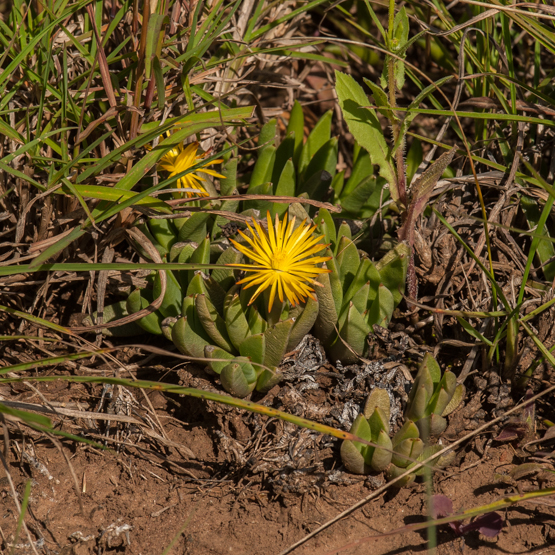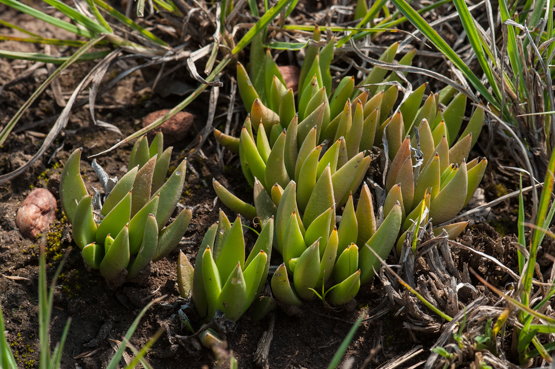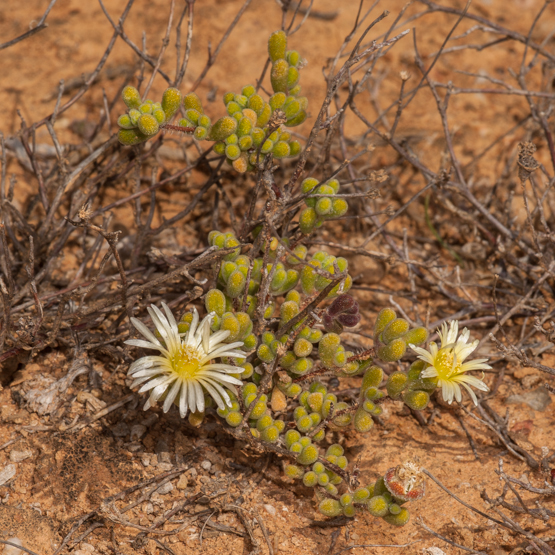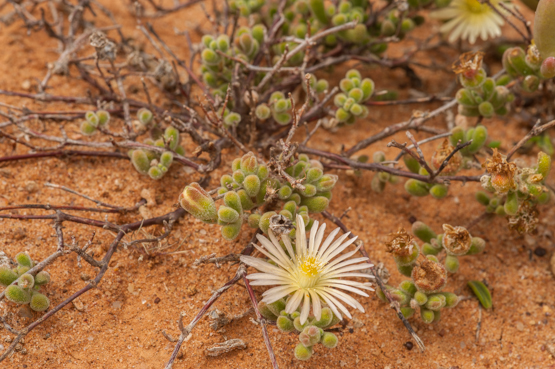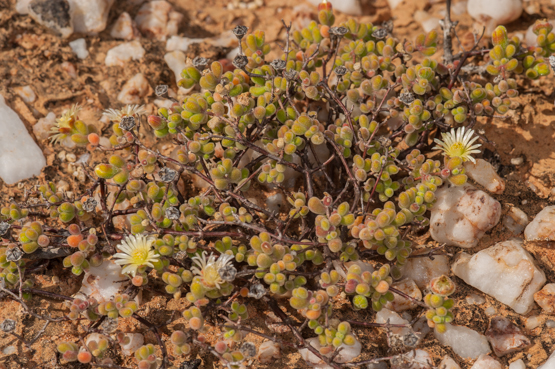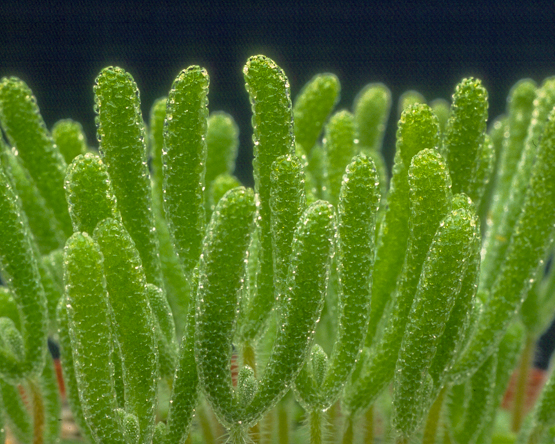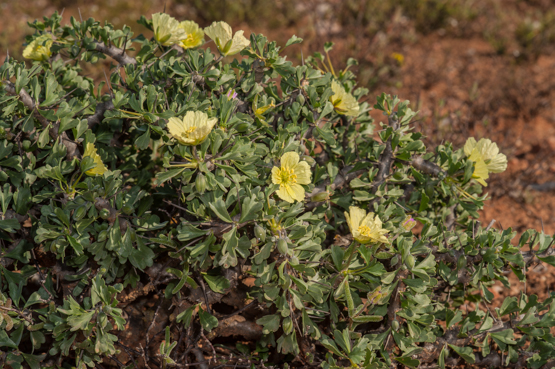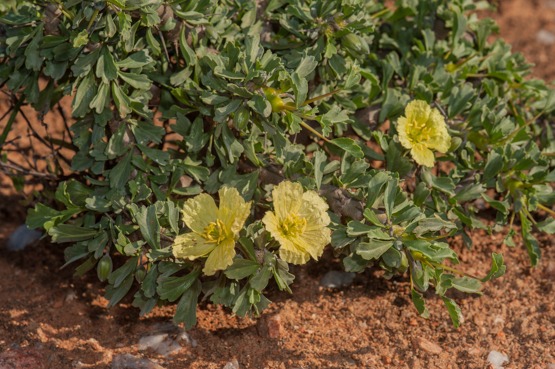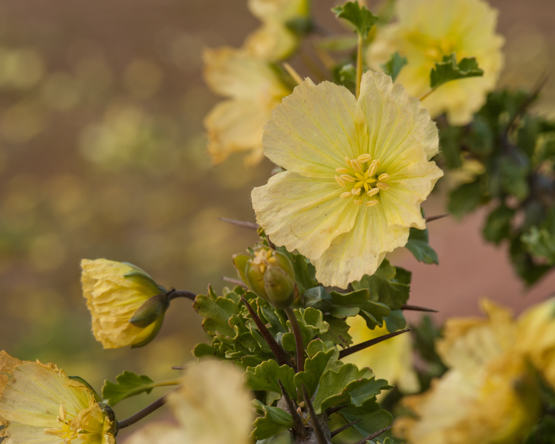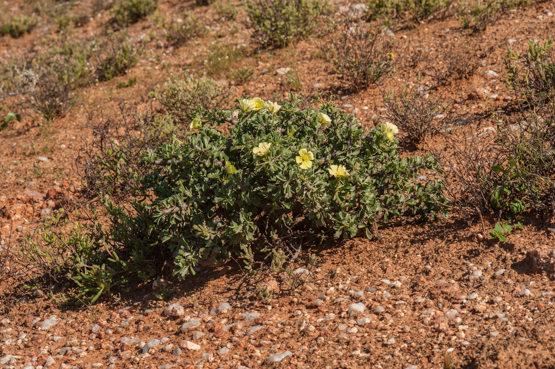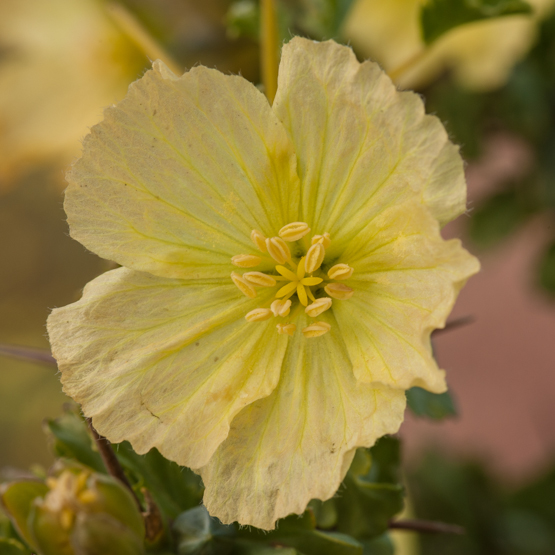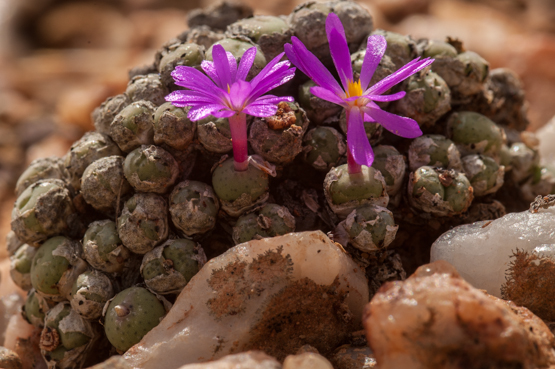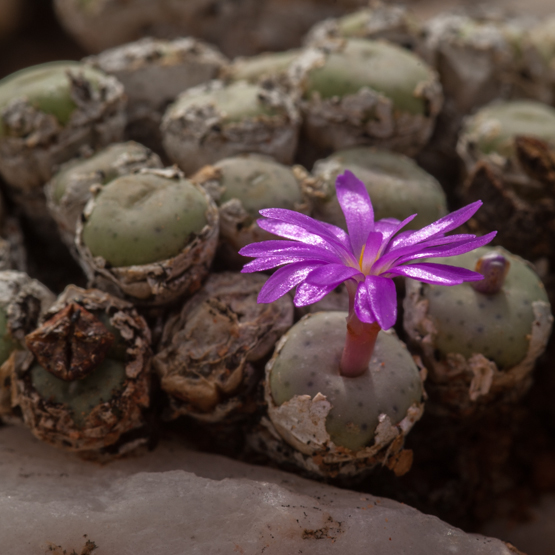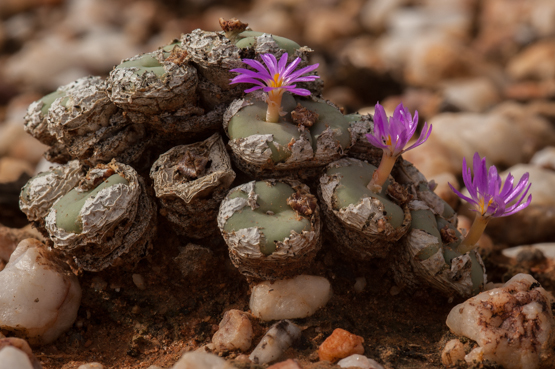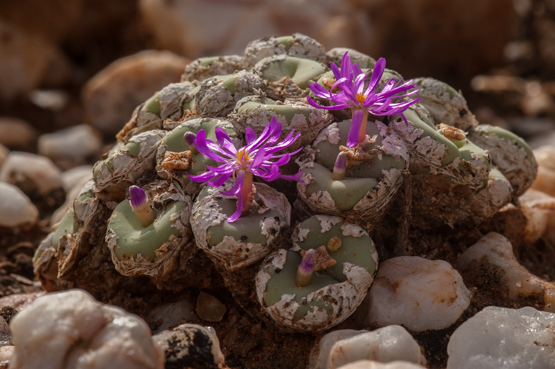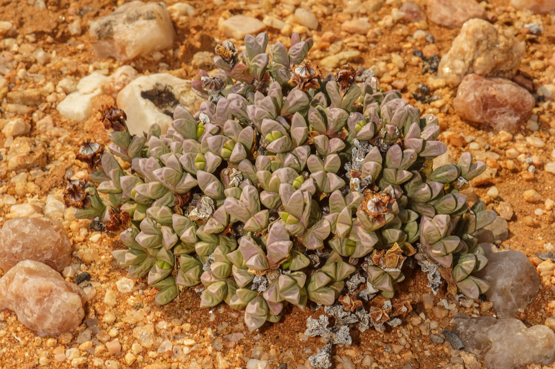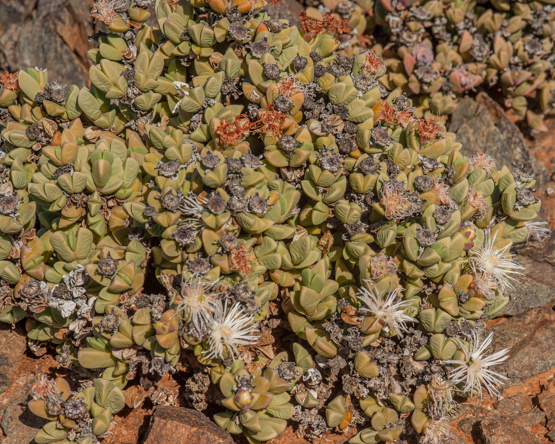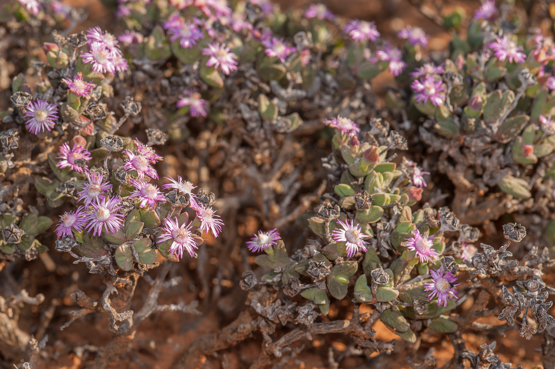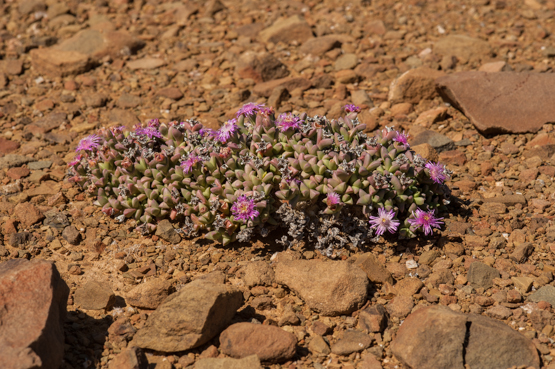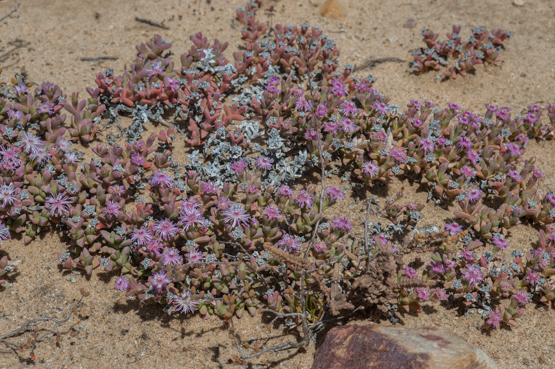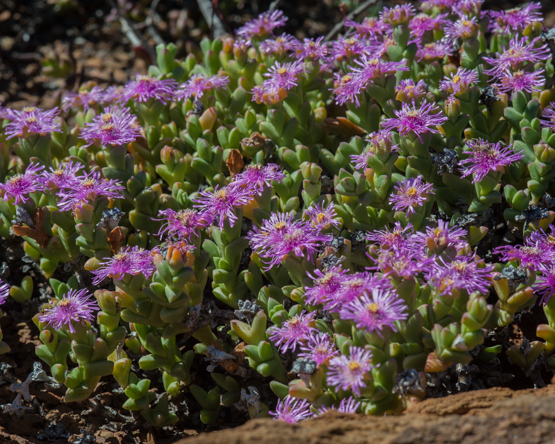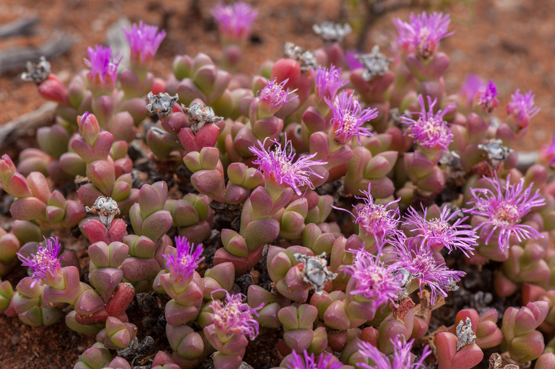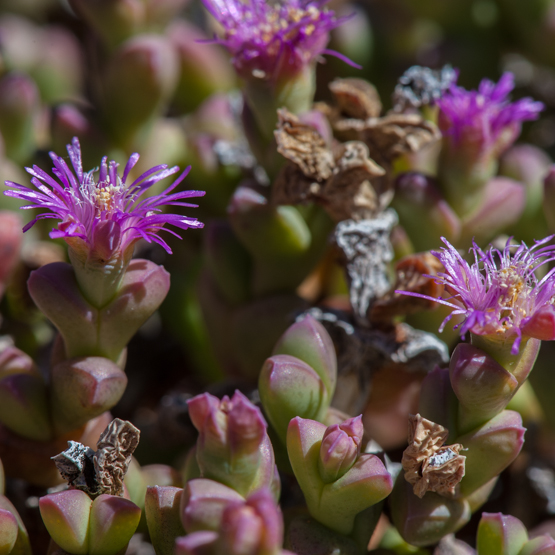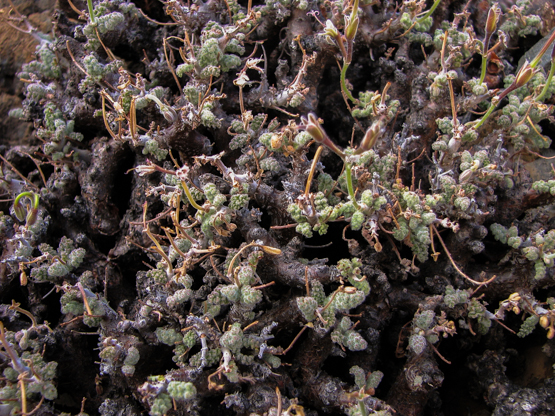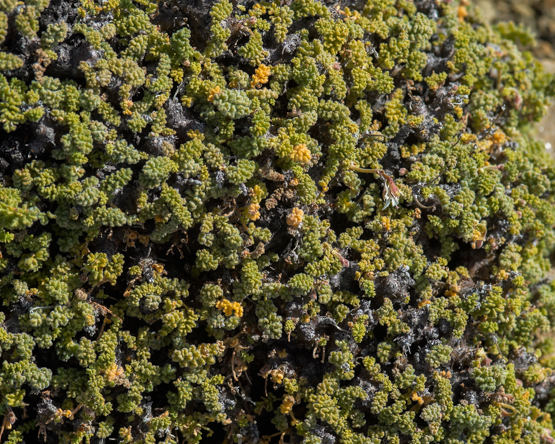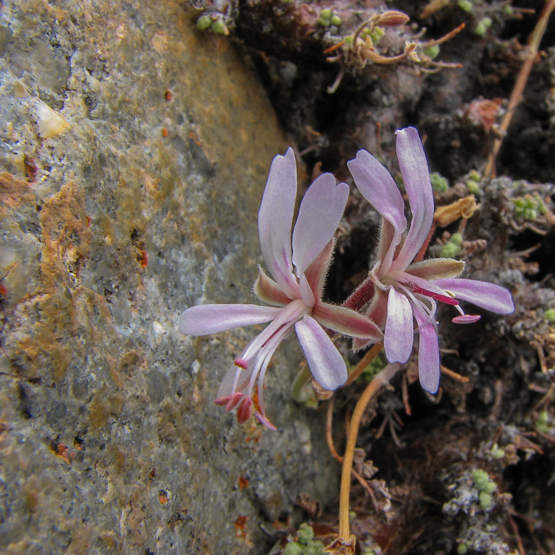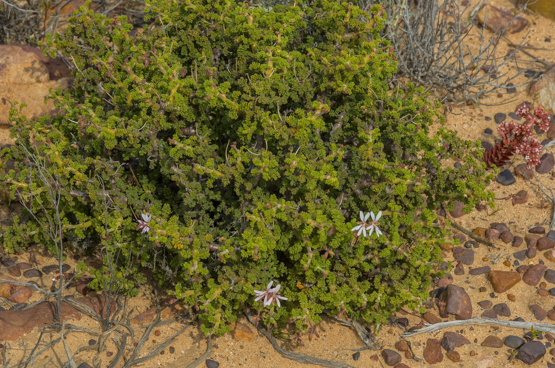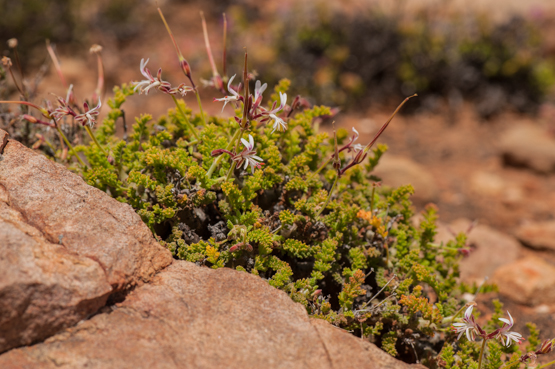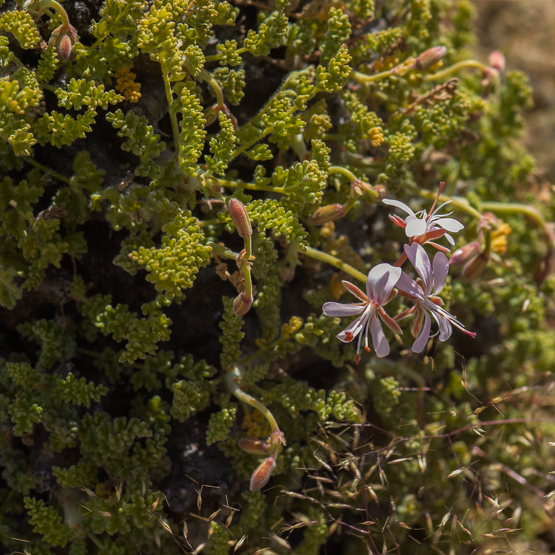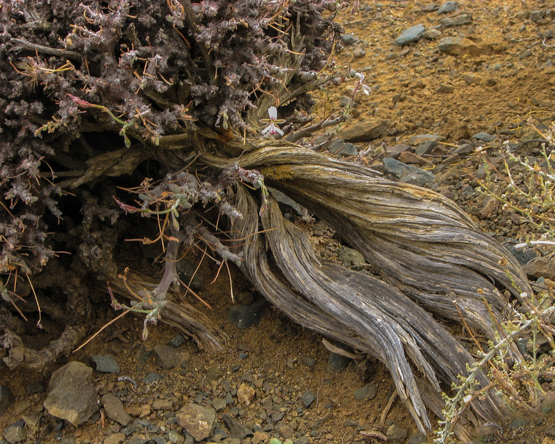The genus Bergeranthus occurs in the Eastern Cape between Utenhage and East London and northwards to Cradock. The plants form tuft and have a fleshy rootstock. Flowers open in the evening or late afternoon.
B. multiceps is common in open grassland between Joubertina and the Keiskamma River. Rainfall occurs here in all seasons.
Category: succulents
Drosanthemum schoenlandianum
Monsonia ciliata Part 2
Monsonia (Sarcocaulon) ciliata Part 1
This planr is only known from northwestern Namaqualand, where it grows in the coastal plain between the mountains and the sea, from Lekkersing southwards to Wallekraal. The plants are usually not taller than 18 cm. The flowers are about 3.5 cm in diameter and are characterized by the cilia along the rim of the petals. According to literature the flowers appear in March, September and in summer, but all but one of the pictures shown here and in the next post were made in July and August.
Conophytum minutum v. minutum (2)
Conophytum minutum v. minutum (1)
Plants of this variety occur widespread from Papendorp and Vanrhynsdorp in the south to Garies and Gamoep in the north and are also found at the coast, near the mouth of the Groenrivier. They grow on a variety of substrates, either in the open on in the shade of shrubby mesembs.
The flowers appear in autumn and range in colour from pale pink to reddish magenta and even (rarely) white.
All photos made on the same day (30 March 2012).
Polymita albiflora
The genus Polymita has only two members, both of which are slow growing shrubs up to 45 cm tall, starting out as small cushions. They occur on the eastern edge of the winter rainfall area in northern Namaqualand on gneiss hills and quartz flats or slopes.
P. albiflora occurs in the drier part of the distribution area: on average less than 100 mm rainfall per year. The species is characterized by the hard prickly mucro (leaf tip), which is absent in P. steenbokensis, and by the generally fewer number of petals (50-100 rather than 70-140). The literature only mentions white petals (as the name implies), but pink also occurs.
Unfortunately the plants rarely flower in cultivation.
Ruschia impressa
Some people seem think that the second part of this name means impressive, but in reality it means impressed. (Don’t ask me what it refers to!).
At first sight it just seems to be another one of those many small, nondescript shrubby Mesembs. Only when you take the time to look at it properly you will see how cute it really is. I quite agree with the remark in the Illustrated of Succulent Plants: “The compact shape suggests that the species has a potential as garden or rockery plants”.
The plants do not get any taller than 6 cm. Maybe the best way to recognize them is the fact that the keel of the leaves is adorned with a small (sometimes inconspicuous) tooth.
The species is endemic to the western part of the Little Karoo (Ladismith, Montagu).
Pelargonium alternans (2)
Pelargonium alternans (1)
One can come across this species from the Bokkeveld Mountains to near Prince Albert on sandstone, shale and quartz slopes and outcrops. The rainfall in this area is between 100 and 200 mm a year, mainly during winter. Although the summers are very hot, there is often some frost in winter.
The plants may become up to 40-50 cm tall and wide and can apparently get very old. (See picture 4)
Flowering is mostly from April to January, but may occur at any time after rain.
